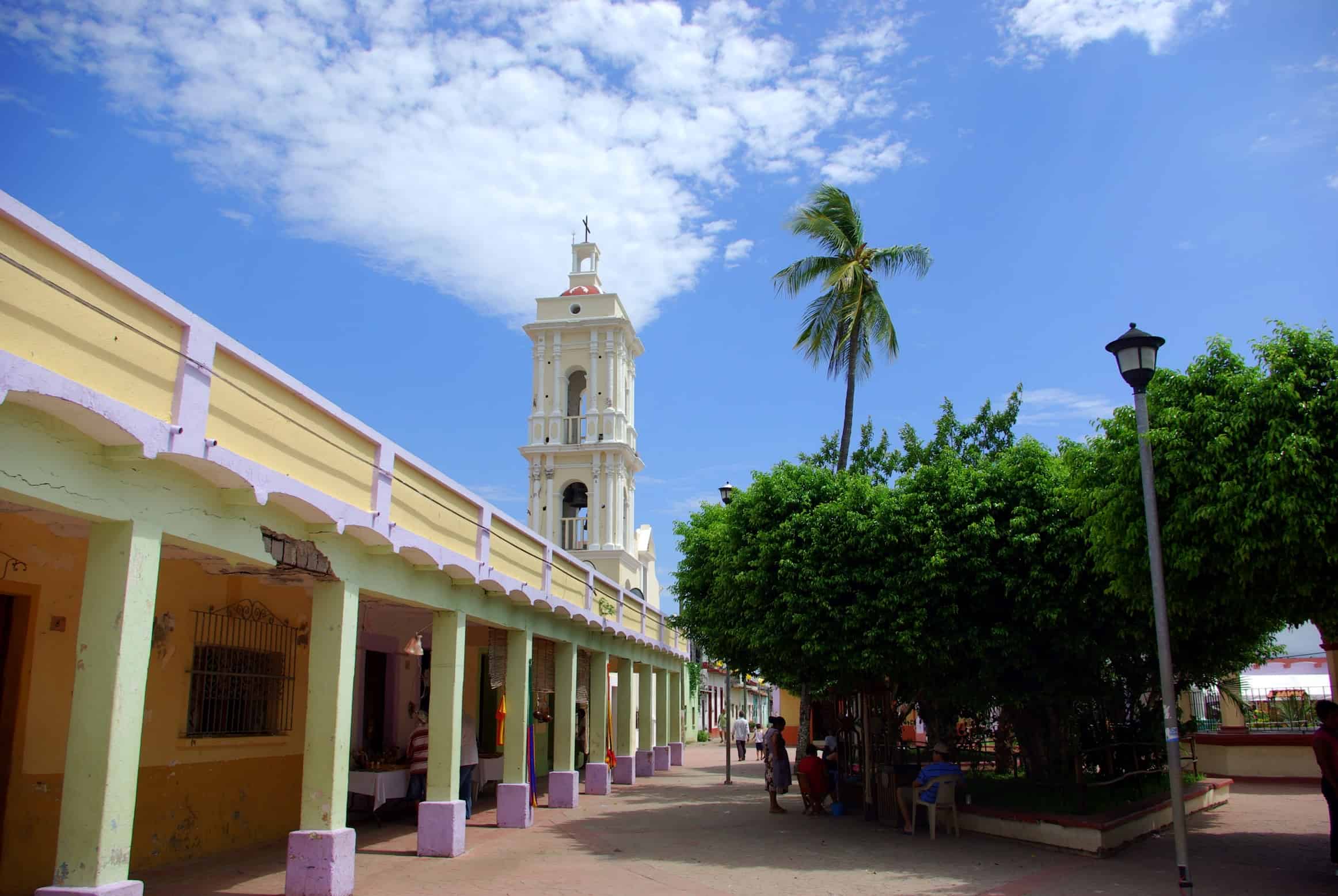 Photos: Creativecommons.org/Thomassin Mickael
Photos: Creativecommons.org/Thomassin Mickael
Mexcaltitan is a sight like no other. From the air, it looks like a small, bustling metropolis that’s peeking out of the surrounding mangrove swamp. This small man-made island-city is 15 kilometres from the nearest town of Santiago Ixcuintla in the Mexican state of Nayarit, but it is only accessible by a 15-minute-long ferry ride. Though home to just 800 people today, it is thought that this island was the birthplace of the Mexican people – the Aztecs.
Mexcaltitan is a combination of the Mexicali Nahuatl words of "mezcal" and "tilan," meaning "riches and abundance" respectively. Named a World Heritage Site in 1986, the island is a beloved gem of the Nayarit region and serves as a beloved destination for both locals and visitors from abroad.
While the sheer spectacle of the city – which looks to be merely be floating without ground beneath it – makes it popular among visitors, it is its history that draws curious foreigners and Mexican locals. According to legend, this city was once the mythical Aztlan, the birthplace of the Aztecs long before they made the journey that culminated in the founding of Tenochtitlan, some 700 kilometres southeast, which served as the foundations for modern day Mexico City.

There have been many theories throughout history about where the Aztecs originally came from before their pilgrimage, but today many historians have found proof from the various ruins that this was indeed the birthplace of Mexico's ancient ancestors. However, why the Aztecs left this fertile island for what is now Mexico City is still left unanswered, and mysterious Mexcaltitan yields no answers.
Mexcaltitan is not a city of ruins. Whatever ancient architecture that may have stood on this small island is long gone today, dispersed in the swamp or buried under modern buildings. Houses, shops and restaurants are crammed onto the little island. The sturdy stone, concrete and stucco buildings are picturesque; they are painted different colours, but all with beautiful red terra-cotta tile roofs. The roads are little wider than common sidewalks – not wide enough for vehicles – and paved with beautiful red bricks.
Mexcaltitan is a close-knit community where everyone pretty much knows everyone. However, they are quick to greet visitors with a smile or strike up conversation. On an island where everyone walks, the locals take life at a slow pace and always have time to stop and chat with each other.

The city practically grinds to a halt in the late afternoon. By then, the fishermen have already hauled in their catch for the day and have retired to the pool hall for cerveza and billiards to unwind. The streets become practically abandoned by the time tourists head back to the ferry after their day trips. If not for the echoes of Spanish melodrama from telanovelas coming out the windows, one might believe there was no one in the city except the local cats that are out eyeballing the drying shrimp left unguarded by the docks.
As you walk through the brick streets of Mexcaltitan, you will definitely notice the sidewalks as they oddly hang two to four feet off the ground. This may seem strange and out of place during the dry season, but during the rainy season, the surrounding swamp floods and takes much of the city down with it. When the streets flood, the locals take to using the raised sidewalks and small boats to get around the city. The small brick streets are claimed by the water, making the streets of the city a series of canals. This unique way of life has earned the city the playful nickname of "the Venice of Mexico".
Due to its close proximity to the water, the city's economy is thoroughly rooted in the shrimp industry. Practically everyone works in it in some way – some fish, some sell and some ship. Fishermen head out at 3am to set their shrimp nets, and when they return their haul is sent to the mainland or given to local vendors and restaurants. While the shrimp is shipped all over Mexico, visitors will find shrimp in no short supply within the city itself. Fat pink shrimp sit out to dry on concrete, restaurants with hand written signs advertise their shrimp dish of the day, and shops offer fat bags of shrimp to sell to visitors. Try some of the locals shrimp dishes, such as shrimp pate, shrimp tamales and shrimp ceviche.
As the city is located in a mangrove swamp, they also have an overabundance of mangrove. Many of the locals make mangrove-based carved and painted figurines, statues and masks, as well barcinas that are used to store shrimp caught. The local restaurants also use the mangrove root to fuel their fires, which gives an interesting flavour to their grilled dishes. Mangrove leaves are also used in steamed dishes like pescado sarandeado.
The Museo el Origen is the only museum on the island dedicated to the history of magical Mexcaltitan. In Mexcaltitan, all roads lead to the Museum of Origin, which is located in the town square, just across from the Saint Peter and Paul church. Inside the museum, the history of the island is traced from its earliest inhabitants from about 4,000 BC to the present day. There are some fascinating Aztec artefacts, including several stone engravings of a heron capturing a snake – an iconic Aztec symbol.
Mexcaltitan is a magical city where it feels like time slows down as the locals go about their day contented to enjoy their little slice of paradise and ignore the troubles of the outside world. While the city looks like a complex wheel from the air, it is really a simple, sweet paradise at heart.


